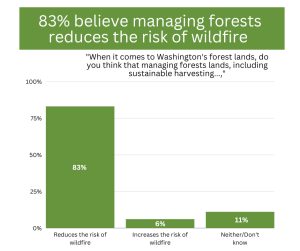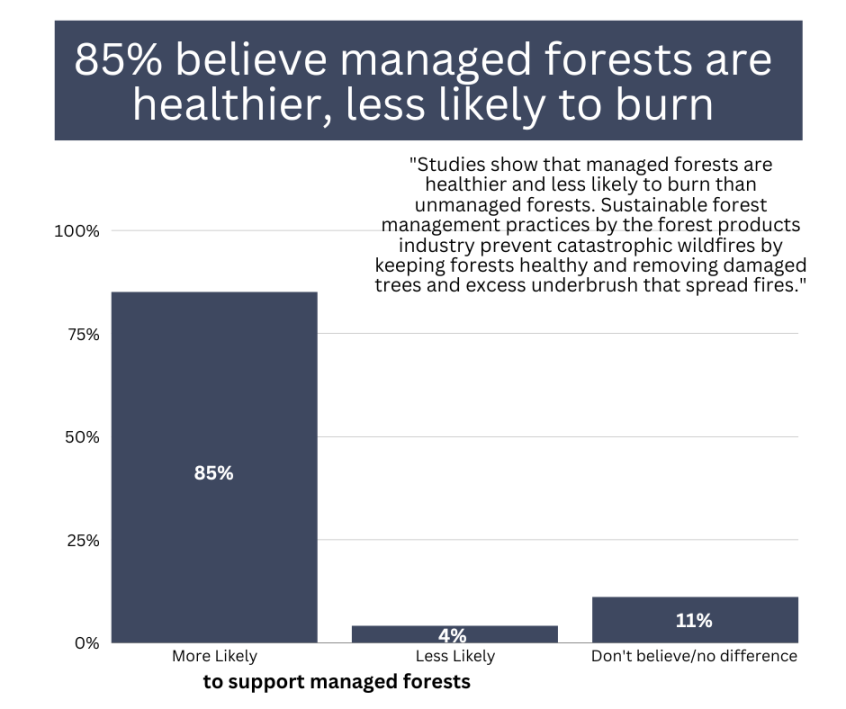An overwhelming majority of Washington residents back the forestry sector and working forests. That’s according to a recent poll that found most Washington voters – 89% – throughout all four corners of the state saying they support forest management to promote thriving, healthy forests.

Forest management refers to efforts taken by the forest products sector to sustainably grow, harvest, replant and maintain the health of forest lands with the goal of providing high-quality, carbon friendly forest products that improve our quality of life now and for the future. This includes sustainable harvesting, thinning, removing damaged trees and excess underbrush that fuel fires, and other science-backed practices that promote forest health and resiliency.
In addition to concluding forest management has mainstream support, the same survey found 85% of people said managed forests are healthier than unmanaged forests. In addition, 83% of respondents believed managed forest lands are less likely to burn or result in catastrophic wildfires than unmanaged forests.
The survey results come at a time when wildfires have become more frequent and more severe, impacting the entire state. In mid-August, wildfire smoke from Canada, the Gray Fire in Medical Lake and several others throughout Washington, generated smoke that blanketed the entire state and created poor air quality indexes hovering between 170 and 190.
Large-scale and catastrophic wildfires also pose serious environmental threats. An average 607,813 acres burned each year between 2014-2021, releasing an average 8.6 million metric tons of carbon dioxideemissions annually. This is equivalent to emissions created by 1.9 million cars each year – or nearly two-thirds (64%) of the state’s 2.98 million registered cars.

In 2023 thus far, the state has experienced 1,749 fires with more than 154,000 acres burned. Wildfire season unofficially ends early October when regular rains return. But wildfire experts remain vigilant since state climatologists warn hotter, drier summers have extended wildfire seasons to begin earlier in the year and end later in the year.
This is where the importance of forest management comes in.
Treating forest fuel loads and preventing catastrophic fires is more cost effective – and better for the environment – than suppressing fires on untreated forest lands. That’s because thinned forests remove weak and diseased trees to allow space for healthy trees to grow. Underbrush and vegetation left unchecked act as fuel for fires, helping blazes spread rapidly and burn more intensely.
Said Washington State University fire ecology professor Mark Swanson in an August Spokesman-Review article: “We can’t really alter the weather so much, except indirectly through things like climate change. But we can alter the fuel bed. We need to manage grasslands, shrublands and forest lands in ways that will make them safer and more resilient when fire does come.”
